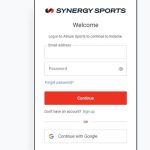In a world where everything moves fast, signing documents should be quick and effortless. Whether you’re closing a deal or signing a personal lease, there’s no need to print, sign, scan, and email anymore. Welcome to the digital age — where you can esign PDFs online with just a few clicks!
What is E-signing?
Let’s keep it simple.
Esigning means adding your signature to a digital document — like a PDF — without ever touching a piece of paper. It’s fast, secure, and totally legal (yes, even in court!).
Why E-sign PDFs?
Here’s why everyone’s switching to e-signatures:
- Save time: No printing or scanning.
- Save money: No paper, ink, or postage.
- Eco-friendly: Let’s save some trees!
- Convenient: Sign from anywhere — even your couch.
- Safe: Many platforms use encryption and audit trails.
Is It Legal?
Short answer: YES!
Electronic signatures are legally binding in many countries. If you’re in the U.S., the ESIGN Act and UETA make it official. In Europe, it’s called eIDAS.
As long as all parties agree to sign electronically, and you use a reliable platform, you’re all good!
Choosing the Right E-sign Tool
There are lots of platforms out there. So, how do you pick?
Consider these things:
- Ease of use: Can you figure it out in under 5 minutes?
- Security: Are documents encrypted?
- Free plan: Great for occasional users.
- Integration: Works with tools like Gmail, Dropbox, or Google Drive?
Here are a few popular options:
- DocuSign – Business-grade, super secure.
- Adobe Acrobat Sign – Great if you already use PDFs a lot.
- HelloSign – Now part of Dropbox, beginner-friendly.
- SignNow – Affordable and solid features.
- Smallpdf – Simple design for personal use.

How to E-sign a PDF Online (Step by Step)
Okay, let’s walk you through it. Most platforms work in a similar way:
- Open the website or app.
- Upload your PDF file. Drag and drop or select from your device/cloud.
- Click ‘Sign’ or ‘Add Signature’.
- Create your signature. Some tools let you:
- Draw using your mouse or touch screen.
- Type your name (usually with nice font options).
- Upload a photo of your handwritten signature.
- Place the signature on the PDF. Drag it to where it belongs.
- Save or share the document. Done!
It’s that easy.
Signing on Mobile
What if you’re not near a laptop?
Good news: Most e-signing tools have mobile apps. Some even work in your phone’s browser.
Here’s how signing on mobile works:
- Open the app or browser.
- Upload the PDF from your phone or cloud.
- Sign using your finger!
- Share or email the signed file.
Pro-tip: Use cloud storage like Google Drive, iCloud, or Dropbox for easy access across devices.
For Business Use
Running a business means lots of paperwork — contracts, invoices, NDAs, the list goes on.
E-signing can speed up your workflow:
- Close deals faster by letting clients sign online.
- Track who signed and when.
- Automate reminders for unsigned documents.
- Ensure compliance with audit trails and signature verification.
Many platforms offer team features like:
- Multi-user access
- Role assignments
- Template creation

For Personal Use
You don’t need to own a company to e-sign!
Here are a few everyday uses:
- Rental agreements
- School permission slips
- Freelance contracts
- Tax forms
- Legal documents like power of attorney
Even grandparents can hop on board — it’s really that simple!
Tips & Best Practices
Want to be an e-signing ninja? Follow these tips:
- Double-check the recipient’s email. Typos = trouble.
- Use a strong signature password or PIN if your platform allows it.
- Keep a copy. Always download a signed version for your records.
- Label your files clearly. “Contract_Mike_Signed.pdf” beats “file123.pdf.”
- Stay updated. E-sign laws can vary between countries.
Are Free Tools Enough?
Great question!
If you only e-sign once in a while, a free tool will do. Most offer:
- 1-3 free signatures per month
- Basic editing tools
- Cloud integration
But for frequent signers or large businesses, investing in a premium plan makes sense.
Security Matters
Some people worry about sending private documents online. Let’s clear things up:
- Most platforms use bank-level encryption.
- Audit trails show who signed, when, and from where.
- Two-step authentication adds extra protection.
- Always use a trusted platform. Look for HTTPS in the URL.
Your signature is personal. Treat it like your password!
Final Thoughts
Esigning PDFs online is more than just a modern convenience — it’s a game-changer for both business and personal life.
Now that you know how simple (and fun) it is, what are you waiting for?
Next time someone emails you, “Can you sign this?”, don’t bother printing it.
Just e-sign it. Boom. Done.
Go ahead. Join the paperless revolution!



